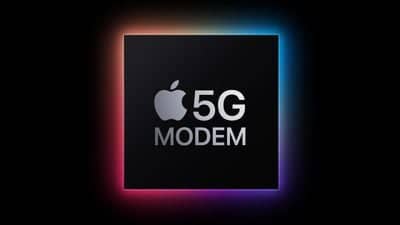By Julie Clover
Apple has been working on creating its own 5G modem for the past few years, with the ultimate goal of eliminating the need for third-party modem technology. Apple’s 5G modem is slowly getting closer to completion, and we could see the first iPhone with an Apple modem in 2025.

This guide covers everything we know about the development of Apple’s 5G modem.
The First Products with Apple’s 5G Modem
Swapping out a modem chip may not seem like a big deal, but tweaking the cellular technology can have a big impact. Apple needs to make sure its 5G modem is as good or better than the 5G chips from its current modem supplier Qualcomm before committing to its own technology.
For that reason, we expect the 2025 iPhone SE 4 to be the first Apple device to feature an Apple-designed 5G modem. This is a smaller device than the flagship smartphone, and will allow Apple to see the modem's performance at scale in consumer hands before bringing Apple's modem to the mainline iPhone lineup.
Current rumors suggest the iPhone SE 4 will launch in early 2025, likely sometime before April. After Apple releases the iPhone SE 4 with the Apple modem, we could see it in a second device as early as September 2025.
Apple analyst Ming-Chi Kuo has suggested that the upcoming ultra-thin iPhone 17 “Air” or “Slim” will also use the Apple modem. Apple is estimated to ship between 35 and 40 million iPhones with Apple's modem in 2025, and then, if all goes well, more iPhones will use the technology in 2026 and 2027.
No mmWave 5G?
In September, DigiTimes speculated that Apple's first 5G modem chip would not support the faster mmWave technology and would instead be limited to sub-6GHz 5G. mmWave 5G is the fastest 5G, but it has a short range and is limited to large venues and major cities. Suburban and rural areas use sub-6GHz frequencies.
Sub-6GHz isn't as fast as mmWave 5G, but it has a much longer range, making it more viable for widespread use. DigiTimes believes Apple will continue to use Qualcomm modems for iPhone models that support mmWave, which are essentially U.S. iPhones. mmWave is still limited in availability in many countries, which is why Apple only sells mmWave-enabled iPhone modems in the U.S.
Bloomberg's Mark Gurman also said that one of the modem chips Apple is developing doesn't support mmWave 5G, so that lends credence to DigiTimes' report.
Possible All-in-One Chip
A recent report from 9to5Mac suggested that Apple’s first modem chip will actually be more than just a modem, combining 5G connectivity, Wi-Fi, Bluetooth, and GPS into a single chip. However, that doesn’t match up with what we’ve heard from Gurman. While Apple is said to be working on an all-in-one chip, we shouldn’t expect that anytime soon.
Gurman believes that Apple’s first version of a 5G modem won’t match Qualcomm’s technology, and that the first custom design won’t bring any noticeable benefits to users. Apple hopes the modem will eventually evolve into a more advanced component, eliminating multiple chips and saving money and internal space.
It's unclear from two separate reports whether Apple's chip will be a standalone modem or a chip that includes multiple components, but given reports of development difficulties, Apple may not reach the point of an all-in-one chip.
Qualcomm Dispute
Currently, all iPhones use Qualcomm 5G modems, and Apple must buy the modem chips and pay a patent licensing fee to use Qualcomm's technology. Back in 2017, Apple sued Qualcomm for anti-competitive patent licensing practices, and also claimed that Qualcomm failed to pay more than $1 billion in royalty rebates.
After the lawsuit, Apple tried to cut ties with Qualcomm and decided to use only Intel modem chips in the 2018 iPhone XS/XR models and the 2019 iPhone 11 lineup. Apple has used Intel chips for some iPhones in the past, choosing a mix of Qualcomm and Intel modems in different regions, but Apple wanted to ditch Qualcomm entirely.
Only Intel chips were suitable for the 2018 and 2019 iPhones, but for the 2020 iPhone 12 line, Apple wanted to move to 5G technology. Apple's plan was to use Intel 5G chips, but Intel ran into development issues. Intel missed its development deadlines, and it became clear that Intel 5G chips weren't coming.
Apple needed Intel's 5G modems to be functional and ready for testing by the summer of 2019, and the finished chips needed to be shipped to Apple in early 2020, which wasn't going to happen. Apple talked to Samsung and Mediatek about the possibility of 5G modems to avoid having to make amends with Qualcomm, but it turned out Qualcomm's modems were the only option.
In April 2019, Apple reached a settlement with Qualcomm, and the two companies dropped all litigation. Apple paid Qualcomm between $5 billion and $6 billion in back royalties and agreed to continue paying ongoing patent royalties for each iPhone it made, plus the company signed a six-year licensing deal with Qualcomm.
The 2020 iPhones eventually used Qualcomm's 5G chips, and every subsequent iPhone has also used Qualcomm's technology. Apple recently extended its licensing deal with Qualcomm until March 2027, so we'll likely see Qualcomm modems in some devices before then as Apple transitions to its own technology.
Buying Intel
Immediately after Apple struck a deal with Qualcomm, Intel announced plans to exit the 5G modem business. Intel failed to create a 5G modem to compete with Qualcomm, and that ended Intel's modem business. Intel had met customer commitments for its existing 4G modems, but then-Intel CEO Bob Swan said there was “no clear path to profitability and positive returns” in the smartphone modem business.
Intel decided to sell its modem business, and Apple ultimately decided to acquire it. In July 2019, Apple and Intel signed a deal in which Apple acquired most of Intel's smartphone modem business. About 2,200 Intel employees joined Apple, and Apple also acquired related intellectual property, equipment and leases from Intel in a deal valued at $1 billion.
With the Intel purchase, Apple now owns more than 17,000 wireless patents, and Intel employees join Apple's cellular technology group. The purchase was intended to help Apple speed up the development of 5G modems, but Apple still faces delays and design issues.
Development Issues
Rumors have been circulating that iPhones will use an Apple-designed modem chip starting in 2023, when the technology was supposed to be ready. In mid-2022, Kuo said Apple's work on the modem had “failed,” causing development to stall and the launch to be delayed.
In late 2023, Gurman said Apple had been forced to delay the debut of the Apple modem until 2025 or 2026 due to development setbacks, and he claimed the technology could be “years behind the competition.”
Apple reportedly ran into issues with the Intel code it was working with. Engineers had to rewrite the code, and adding new features resulted in existing features breaking. Apple also has to avoid infringing Qualcomm patents with the chip, which adds another layer of complexity.
A September 2023 report from The Wall Street Journal said Apple ran into trouble due to unrealistic goals, a poor understanding of the challenges involved in modem development, and completely unusable prototypes. Chips tested in late 2022 were allegedly “three years behind Qualcomm’s best modem chip” and risk making the iPhone’s wireless speeds slower than the competition.
Release date
It looks like we’ll see Apple’s first modem in the iPhone SE 4, expected in early 2025. After that, Apple will likely roll out the technology to other devices using a mix of Qualcomm chips and custom-designed chips until its own 5G modem work is advanced enough to ditch Qualcomm entirely.
108 comments









